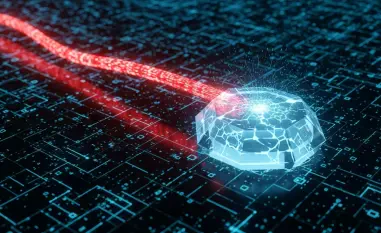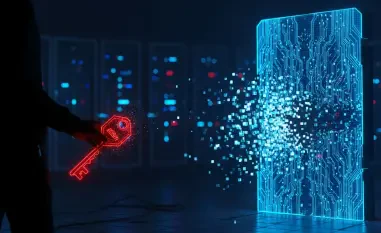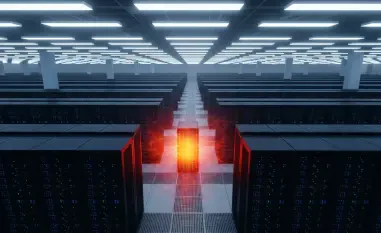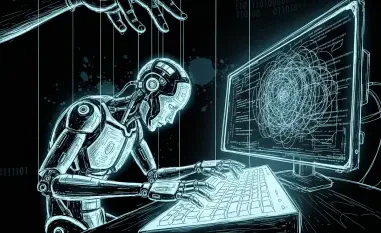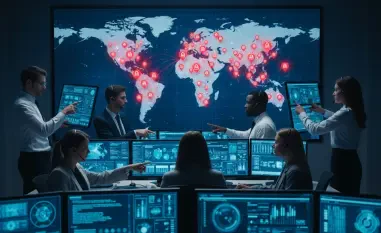Malik Haidar is a cybersecurity expert with extensive experience in combating threats and hackers within multinational corporations. His expertise encompasses analytics, intelligence, and security, with a strong focus on integrating business perspectives into cybersecurity strategies. In this interview, Malik sheds light on the concept of “Collective AI,” its potential applications, and the underpinning technologies that make it feasible. Drawing parallels to sci-fi while outlining real-world implications, Malik shares his insights on how Collective AI could revolutionize various domains.
Can you explain what “Collective AI” is and how it differs from conventional AI systems?
Collective AI refers to networks of AI units that not only learn and adapt independently but also continuously share their knowledge and skills with each other. Unlike conventional AI systems, which often operate in isolation and have fixed sets of data, Collective AI units collaborate, creating a synchronized network where knowledge is dynamically exchanged. This allows for more rapid and adaptable learning and problem-solving.
How do you envision the practical applications of Collective AI in fields like cybersecurity, healthcare, and disaster response?
The potential applications of Collective AI are vast. In cybersecurity, for example, an AI unit detecting a threat can instantly share that information with the entire network, enabling a coordinated defense strategy. In healthcare, personalized medical agents equipped with Collective AI could combine patient data with the latest medical research to offer highly tailored treatments. In disaster response scenarios, AI-driven robots could work together, sharing real-time information to adapt quickly to changing conditions, ensuring more effective and efficient rescue operations.
What inspired the concept of Collective AI, and how closely does it relate to the sci-fi idea of Star Trek’s Borg?
The inspiration for Collective AI indeed draws from the collaborative intelligence depicted in sci-fi, like the Borg in Star Trek. However, unlike the Borg’s centralized and often oppressive control, Collective AI focuses on decentralized, democratic collaboration. Each AI unit retains its autonomy and ability to pursue individual objectives, which is essential for maintaining diverse perspectives and avoiding the pitfalls of a singular, dominating intelligence.
In what specific ways can Collective AI improve cybersecurity measures?
Collective AI revolutionizes cybersecurity by enabling real-time knowledge sharing across multiple AI units. When one unit identifies a new threat, it can disseminate this information instantly, allowing the entire network to respond swiftly and cohesively. This mimics the human immune system, where the detection of an invader prompts a system-wide reaction, thereby enhancing the robustness and responsiveness of cybersecurity defenses.
Can you provide an example of how Collective AI would function in a disaster response scenario?
Imagine a natural disaster like an earthquake. Collective AI-driven robots deployed in the area can share real-time data about the environment, such as structural stability and human locations. If one robot discovers a blocked pathway, it can immediately inform others, allowing them to reroute and optimize rescue operations continuously. This cooperative intelligence ensures that the robots can effectively adapt their strategies and maximize their impact on saving lives.
How might personalized medical agents benefit from Collective AI, specifically in terms of health outcomes?
Personalized medical agents utilizing Collective AI could significantly enhance health outcomes by integrating patient-specific data with broader medical knowledge. These agents can dynamically incorporate the latest research and clinical trials into their recommendations, ensuring that treatments are not only personalized but also advanced. The continuous sharing of information among agents means that the entire network benefits from every piece of new medical knowledge.
What are the main risks associated with Collective AI, and how do you propose to mitigate them?
One of the main risks with Collective AI is the rapid propagation of unethical or malicious knowledge. To mitigate this, it’s crucial to implement strict ethical guidelines and monitoring systems. Additionally, maintaining the autonomy of individual AI units helps ensure that a single compromised unit cannot dictate the behavior of the entire network. This distributed approach promotes a balanced and secure form of collective intelligence.
How does the concept of maintaining individual AI objectives contribute to the safety of Collective AI systems?
By allowing each AI unit to maintain its own objectives while participating in the collective, we create a system of checks and balances. This decentralization means that no single unit can dominate or mislead the collective. It ensures diversity in decision-making processes and prevents the risk of a monolithic AI system taking harmful actions, thereby enhancing the overall safety and robustness of the network.
What recent advancements in machine learning led you to conclude that the future of AI lies in collective intelligence?
Recent advancements include developments in lifelong learning and universal protocols that facilitate knowledge sharing among AI systems. These innovations enable AI agents to continuously learn from new data and experiences throughout their operational life. The ability to recycle and share knowledge efficiently is proving to optimize learning processes, reduce energy demands, and create systems capable of evolving dynamically – all key components of Collective AI.
Could you elaborate on the technological foundations necessary for implementing Collective AI, such as lifelong learning and universal protocols?
Lifelong learning involves AI systems that can continuously update their knowledge base as they encounter new data. Universal protocols, on the other hand, ensure that these systems can communicate and share information seamlessly. Together, these technologies create a foundation where AI units can collaborate in real-time, exchanging insights and adapting to new scenarios. This interplay is crucial for the effective functioning of Collective AI.
How do current AI models like ChatGPT differ from the envisioned Collective AI in terms of learning and knowledge-sharing capabilities?
Current models like ChatGPT predominantly learn during intensive training sessions and have limited capabilities for adapting post-deployment. They do not effectively share knowledge with other models, leading to redundancy and inefficiencies. In contrast, Collective AI units continuously learn and share knowledge in real-time, enhancing their adaptability and collective intelligence, which is a fundamental shift towards more sustainable and responsive AI systems.
Why do you believe that large, expensive, non-shareable AI models will not survive in the future dominated by sustainable and evolving AI units?
As AI technology progresses, sustainability, efficiency, and adaptability become paramount. Large, static models are resource-intensive and lack flexibility. The future of AI is heading towards small, dynamic units that can share knowledge, learn continuously, and operate within a network. This shift favors systems that can evolve and adapt, making them far more sustainable and effective in addressing diverse, real-world problems.
How has human knowledge growth influenced your vision for future AI societies, and what parallels can be drawn between human communication and AI collaboration?
Human progress has always been driven by communication and the sharing of knowledge. The same principles apply to AI. Just as our societies have evolved through collaborative efforts and cumulative knowledge, AI systems can advance by sharing insights and learning from each other’s experiences. This collective approach mirrors the incremental and adaptive nature of human knowledge development, pointing towards a future where AI agents collaborate similarly.
What role did DARPA play in funding and supporting your research on Collective AI?
DARPA has been instrumental in funding and guiding our research. Their emphasis on innovation and addressing advanced challenges has provided the resources and support needed to explore the frontiers of AI. Their backing has enabled us to focus on lifelong learning and universal protocols, which are critical to the development of Collective AI systems.
How do you see the timeline for the implementation of Collective AI, and what are the major milestones to achieve along the way?
The timeline for fully implementing Collective AI spans the next two decades. Key milestones include advancing lifelong learning technologies, developing universal communication protocols, and creating frameworks for ethical and secure knowledge sharing. As we achieve these goals, we will observe incremental but significant steps toward fully operational Collective AI systems.
What are the key takeaways from your perspective paper published in Nature Machine Intelligence?
The paper highlights the potential for Collective AI to transform various sectors through collaborative intelligence. It underscores the importance of continuous learning, knowledge sharing, and decentralized control. The key message is that AI’s future lies in collective efforts rather than isolated entities, paving the way for more responsive, adaptive, and sustainable AI technologies.
Looking ahead, what are your hopes for AI development in the next wave, particularly in terms of interacting AI agents?
I hope to see AI agents that can communicate and collaborate seamlessly. The next wave of AI will ideally feature units that not only excel individually but also thrive as part of a collective network. This evolution would lead to more robust, efficient, and intelligent systems capable of tackling complex problems through shared insights and coordinated efforts.

